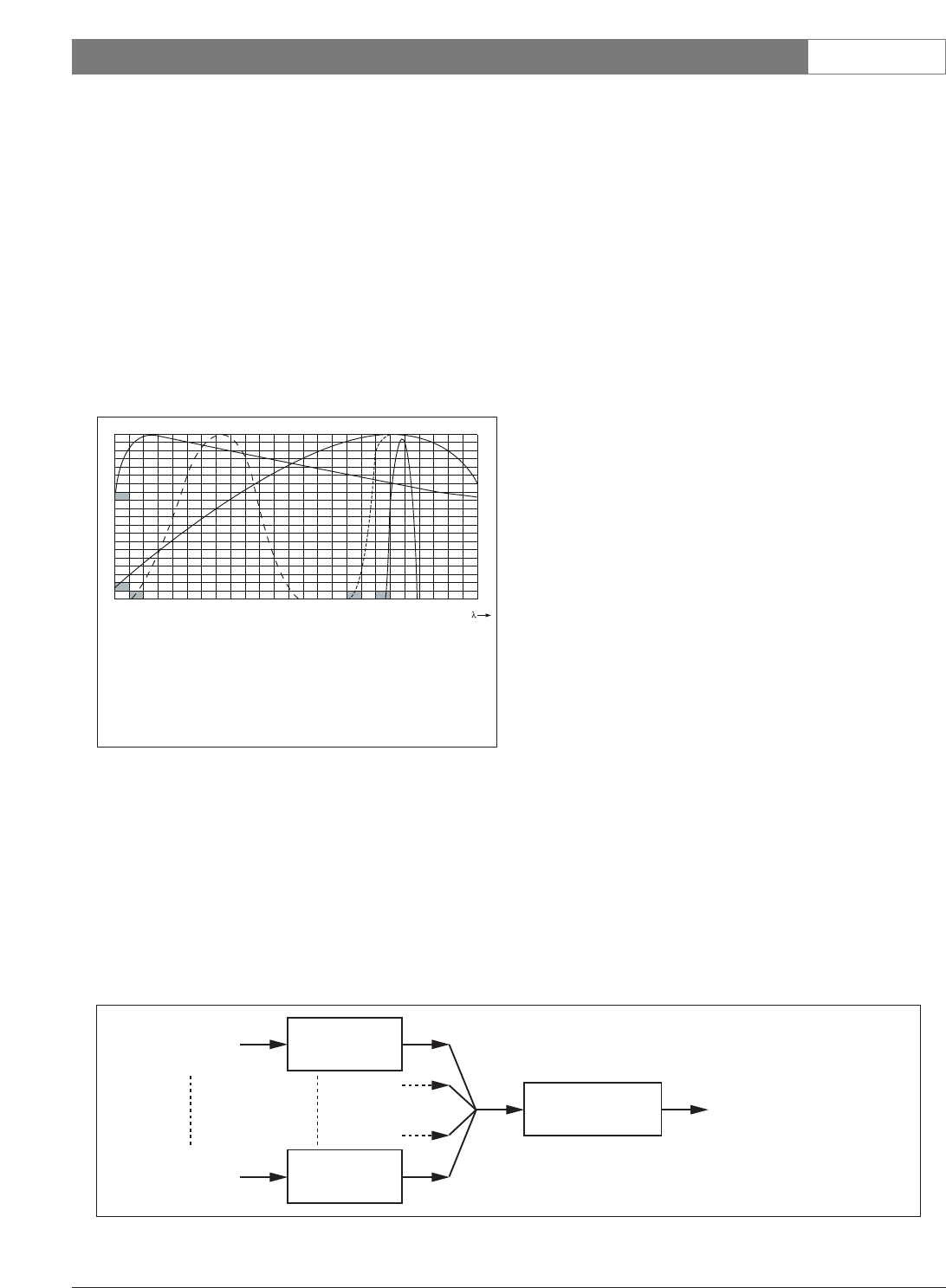
INTEGRUS | Installation and User Instructions | System description and planning en | 2
Bosch Security Systems | 2005-04 | 3122 475 22015en
1.2 System technology
1.2.1 IR radiation
The Integrus system is based on transmission by mod-
ulated infra-red radiation. Infra-red radiation forms
part of the electro-magnetic spectrum, which is com-
posed of visible light, radio waves and other types of
radiation. It has a wavelength just above that of visible
light. Like visible light, it is reflected from hard sur-
faces, yet passes through translucent materials such as
glass. The infra-red radiation spectrum in relation to
other relevant spectra is shown in figure 1.2.
1.2.2 Signal Processing
The Integrus system uses high frequency carrier signals
(typically 2-8 MHz) to prevent interference problems
with modern light sources (see section 1.3.2). The digi-
tal audio processing guarantees a constant high audio
quality.
The signal processing in the transmitter consists of the
following main steps (see figure 1.3):
1. A/D conversion - Each analogue audio channel is
converted to a digital signal.
2. Compression - The digital signals are compressed
to increase the amount of information that can be
distributed on each carrier. The compression factor
is also related to the required audio quality.
3. Protocol Creation - Groups of up to four digital
signals are combined into a digital information
stream. Extra fault algorithm information is added.
This information is used by the receivers for fault
detection and correction.
4. Modulation - A high frequency carrier signal is
phase-modulated with the digital information
stream.
5. Radiation – Up to 8 modulated carrier signals are
combined and sent to the IR radiators, which con-
vert the carrier signals to modulated infra-red light.
In the IR receivers a reverse processing is used to con-
vert the modulated infra-red light to separate analogue
audio channels.
1.2.3 Quality modes
The Integrus system can transmit audio in four differ-
ent quality modes:
• Mono, standard quality, maximum 32 channels
• Mono, premium quality, maximum 16 channels
• Stereo, standard quality, maximum 16 channels
• Stereo, premium quality, maximum 8 channels
The standard quality mode uses less bandwidth and
can be used for transmitting speech. For music the pre-
mium quality mode gives near CD quality.
100
75
1
4
2
50
25
0
400 500 600 700 800
53
900 1000 nm
%
Figure 1.2 Infra-red radiation spectrum in relation to other
spectra
1 Daylight spectrum
2 Sensitivity of the human eye
3 IR radiator
4 Sensitivity of IR sensor
5 Sensitivity of IR sensor with daylight filter
Figure 1.3 Overview of the signal processing (for one carrier)
A/D Conversion
& Compression
A/D Conversion
& Compression
Audio
Channel
Audio
Channel
Protocol Creation
& Modulation
4x
Carrier (to IR Radiators)
4x


















